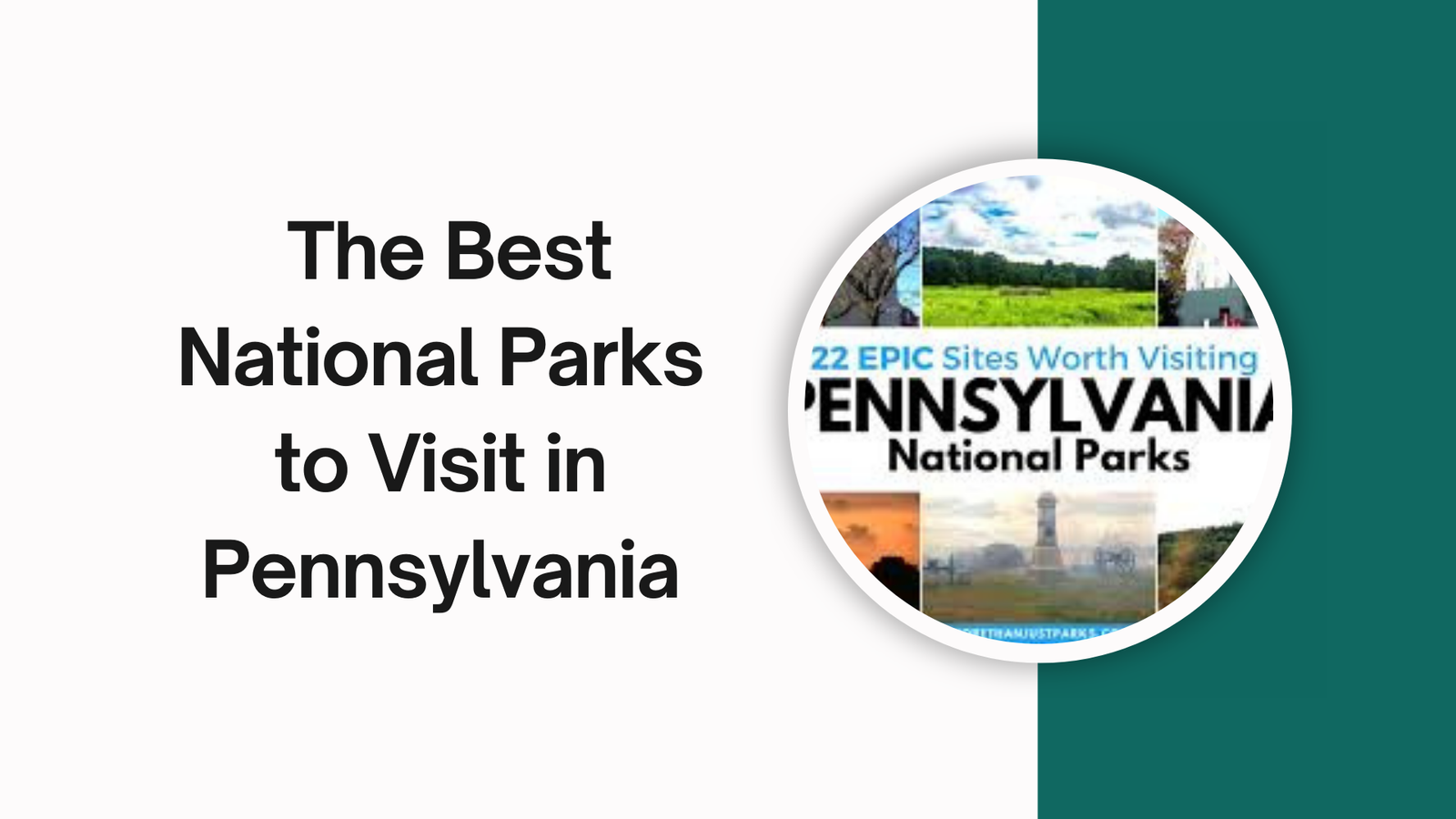
Pennsylvania is steeped in American history and natural beauty, offering a mix of lush woodlands, scenic rivers, and historic landmarks that tell the story of the nation. From the battlefields of the Civil War to stunning mountain vistas and ancient geological formations, Pennsylvania’s national parks and historic sites offer a range of experiences for history buffs and outdoor enthusiasts alike. Here’s a guide to some of the best national parks and historic sites to visit in Pennsylvania.
1. Independence National Historical Park
Location: Philadelphia, Pennsylvania
Highlights: Independence Hall, Liberty Bell, American Revolution history, Benjamin Franklin’s legacy
Independence National Historical Park is a must-visit for those interested in the American Revolution and the country’s founding. This park, located in the heart of Philadelphia, preserves some of the most iconic symbols of American liberty, including Independence Hall and the Liberty Bell.
Independence Hall is where the Declaration of Independence and the U.S. Constitution were debated and adopted. Tours of the hall provide fascinating insights into the creation of these historic documents. Nearby, the Liberty Bell Center houses the famous cracked bell that has come to symbolize freedom and justice. The park also features the Benjamin Franklin Museum, showcasing artifacts and interactive exhibits about Franklin’s life and contributions. Independence National Historical Park brings America’s founding era to life, making it an essential stop for history enthusiasts.
2. Gettysburg National Military Park
Location: Gettysburg, Pennsylvania
Highlights: Civil War battlefield, historic monuments, museum, guided tours
Gettysburg National Military Park is one of the most significant Civil War battlefields in the United States. The site of the 1863 Battle of Gettysburg, a pivotal conflict that marked a turning point in the Civil War, the park is a place of solemn reflection and historical importance.
The battlefield spans over 6,000 acres, with numerous monuments, cannons, and preserved landscapes. Visitors can explore the park on self-guided tours or join ranger-led programs to learn about key moments of the battle. The Gettysburg Museum and Visitor Center offers exhibits, artifacts, and the famous Gettysburg Cyclorama, a massive 360-degree painting depicting the battle. Don’t miss the Soldiers’ National Cemetery, where President Abraham Lincoln delivered the Gettysburg Address. Gettysburg National Military Park is an immersive experience, offering powerful insights into one of America’s defining moments.
3. Valley Forge National Historical Park
Location: King of Prussia, Pennsylvania
Highlights: Revolutionary War encampment, historic buildings, monuments, hiking trails
Valley Forge National Historical Park commemorates the winter encampment of the Continental Army during the harsh winter of 1777-1778. This site represents the endurance and determination of General George Washington and his troops, who faced extreme hardships while training and preparing for the coming battles.
The park includes preserved huts and structures that provide a glimpse into the conditions the soldiers endured. The Visitor Center features exhibits on the Revolutionary War, and several statues and monuments throughout the park honor the individuals who served here. Visitors can also explore the park’s scenic trails, which are popular for hiking and cycling. Valley Forge is a powerful reminder of the sacrifices made for American independence and a beautiful place to explore Pennsylvania’s Revolutionary War heritage.
4. Allegheny Portage Railroad National Historic Site
Location: Gallitzin, Pennsylvania
Highlights: Early railroad history, historic canals, hiking trails, Engine House No. 6
The Allegheny Portage Railroad National Historic Site preserves a unique chapter in American transportation history. Built in the 1830s, the Allegheny Portage Railroad allowed canal boats to be transported over the Allegheny Mountains, linking Philadelphia and Pittsburgh and facilitating westward expansion.
Visitors can explore the remains of this engineering marvel, including restored sections of the track and the historic Engine House No. 6, which showcases how locomotives powered the transportation system. The Visitor Center has exhibits on the construction and operation of the railroad, along with demonstrations of period machinery. The site also features hiking trails that follow portions of the original railroad path, offering scenic views of the surrounding landscape. The Allegheny Portage Railroad is a fascinating glimpse into the early days of American infrastructure and industrial ingenuity.
5. Delaware Water Gap National Recreation Area
Location: Eastern Pennsylvania and New Jersey border
Highlights: Scenic river views, waterfalls, hiking trails, wildlife
Delaware Water Gap National Recreation Area is a breathtaking stretch of the Delaware River that forms the border between Pennsylvania and New Jersey. Covering more than 70,000 acres, the park is known for its beautiful scenery, cascading waterfalls, and abundant outdoor activities.
Visitors can enjoy hiking along the Appalachian Trail, which runs through the park and provides stunning vistas from atop the cliffs. Other popular hikes include the Raymondskill Falls Trail, leading to Pennsylvania’s tallest waterfall, and the Dingmans Falls Trail, which offers easy access to another impressive waterfall. The park is also ideal for canoeing, fishing, and birdwatching. With its rich landscapes and diverse recreational options, Delaware Water Gap National Recreation Area is a haven for nature lovers and adventure seekers alike.
6. Hopewell Furnace National Historic Site
Location: Elverson, Pennsylvania
Highlights: Historic iron furnace, colonial-era village, living history demonstrations
Hopewell Furnace National Historic Site preserves one of the best examples of an early American iron plantation. Established in 1771, this site played a significant role in the iron industry during the 18th and 19th centuries, producing essential materials for the Revolutionary War and beyond.
The site includes a restored furnace, workers’ village, and various buildings that provide insight into the daily lives of workers and the iron production process. Visitors can watch live demonstrations, including iron casting and blacksmithing, which offer an interactive experience of early American industry. Seasonal activities such as apple picking in the historic orchard add to the charm of Hopewell Furnace. This historic site is a fascinating destination for learning about colonial-era industry and early American life.
7. Flight 93 National Memorial
Location: Stoystown, Pennsylvania
Highlights: 9/11 memorial, Wall of Names, Tower of Voices
The Flight 93 National Memorial honors the 40 passengers and crew members who lost their lives on September 11, 2001, when Flight 93 crashed in a field in rural Pennsylvania. These brave individuals fought back against the hijackers, preventing the plane from reaching its intended target.
The memorial includes the Wall of Names, a series of panels inscribed with the names of each passenger and crew member, and the Tower of Voices, a 93-foot tower with 40 wind chimes that symbolize the voices of those lost. The Visitor Center provides an overview of the events of that day and commemorates the courage and sacrifice of Flight 93’s passengers and crew. This serene and moving memorial serves as a place of reflection and remembrance for all who visit.
Conclusion
Pennsylvania’s national parks and historic sites offer a rich tapestry of American history, scenic landscapes, and outdoor adventures. From the birthplace of American independence in Philadelphia to the solemn grounds of Gettysburg and the scenic beauty of the Delaware Water Gap, these parks provide diverse experiences that celebrate both the state’s and the nation’s heritage. Whether you’re exploring Revolutionary War sites, learning about industrial history, or enjoying the outdoors, Pennsylvania’s national parks offer memorable and meaningful experiences for all.
